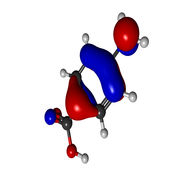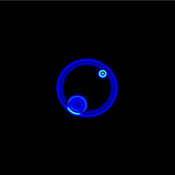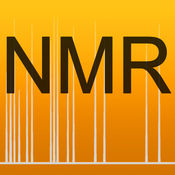-
Category Education
-
Size 35.4 MB
Insensitive simulates the quantum mechanical models that are used to describe the nuclear magnetic resonance (NMR) experiment. The vector model, density matrix and product operators of an ensemble of up to four spins-1/2 and two spin types are visualized. If you like the app and would like to support its development, please consider buying my app Song Quiz.
Insensitive alternatives
WebMO: Molecule Editor, Viewer, and Computational Chemistry Interface
WebMO allows users to build and view molecules in 3-D, visualize orbitals and symmetry elements, lookup chemical information and properties from external databases, and access state-of-the-art computational chemistry programs. WebMO is recommended for students and faculty in high school, college, and graduate school who desire mobile access to molecular structures, information, and calculations. WebMO capabilities include:- Build molecules by drawing atoms and bonds in a 3-D molecular editor, or by speaking the name (e.g., aspirin)- Optimize structures using VSEPR theory or molecular mechanics- View Huckel molecular orbitals, electron density, and electrostatic potential- View point group and symmetry elements of molecules- Lookup basic molecular information, including IUPAC and common names, stoichiometry, molar mass- Lookup chemical data from PubChem and ChemSpider- Lookup experimental and predicted molecular properties from external databases (NIST, Sigma-Aldrich)- Lookup IR, UV-VIS, NMR, and mass spectra from external databases (NIST, SDBS)- Capture high-resolution molecular images- Save and recall molecular structures locally- Export and import structures via emailWebMO is also a front-end to WebMO servers (version 14 and higher):- Supports Gaussian, GAMESS, Molpro, MOPAC, NWChem, ORCA, PQS, PSI, Quantum Espresso, VASP, Q-Chem, and Tinker computational chemistry programs- Submit, monitor, and view calculations- View formatted tabular data extracted from output files, as well as raw output- Visualize geometry, partial charges, dipole moment, normal vibrational modes, molecular orbitals, and NMR/IR/UV-VIS spectra
-
rating 5.0
-
size 19.5 MB
Hydrogen!
Hydrogen is an iOS app dedicated to the visualization of the atomic orbitals of the hydrogen atom as described by quantum mechanics. It is designed to be a tool for teachers and students who are already familiar with some quantum mechanical concepts, but anyone may appreciate the beauty of quantum mechanics :)So, what does an atom look like? INFO MENU: you may read informations about how to use Hydrogen , learn more about the quantum mechanics behind it, what you can actually see and what you should look for
-
size 22.4 MB
Loughborough Wave Lab
Loughborough Wave Lab is an educational learning app designed to aid students in their understanding of electromagnetic wave concepts in an engaging and entertaining way Features include: Virtual pond Persistent Sinusoidal Pulses Virtual Ripple Tank Waveguide Simulator Youngs Double Slit Experiment Custom Simulation ModeLoughborough Wave Lab is intended to accompany teaching on Electromagnetic phenomena and to provide students with an interactive way of seeing these principles in action Educators can now author their own custom simulation files, upload them to a web server and then have Loughborough Wave Lab execute the simulations using a WiFi or cellular data connection to download the configurations and display them to the user. This uses the new, open-source configuration standard CEML which has been introduced by the developer (available at www.github.com/danielrbrowne/CEML)
-
size 16.9 MB
Physics to Go! Part 1
Physics to Go Part 1 Interactive Quantum MechanicsThese are the basic controls of the app:home page - set the range of the x-value for which the Schrdinger equation is calculated (box size) with xmin, xmax set basic step size for the time evolution set the number of points of the wave function to be calculated. A larger number slows down the calculation and uses up more memory, but can increase the accuracy of the calculation. Enjoy the app
-
size 13.0 MB
Orange NMR
App to predict 13C and 1H NMR spectra: draw a structure to see its spectrum. The accuracy of the algorithm is about 1.9 ppm for 13C and 0.21 ppm for 1H (RMSD=3.4 and 0.31 ppm correspondingly).The number of heavy atoms in structure to predict for free is restricted to 12 atoms. 2009, 97, 91
-
size 17.8 MB




